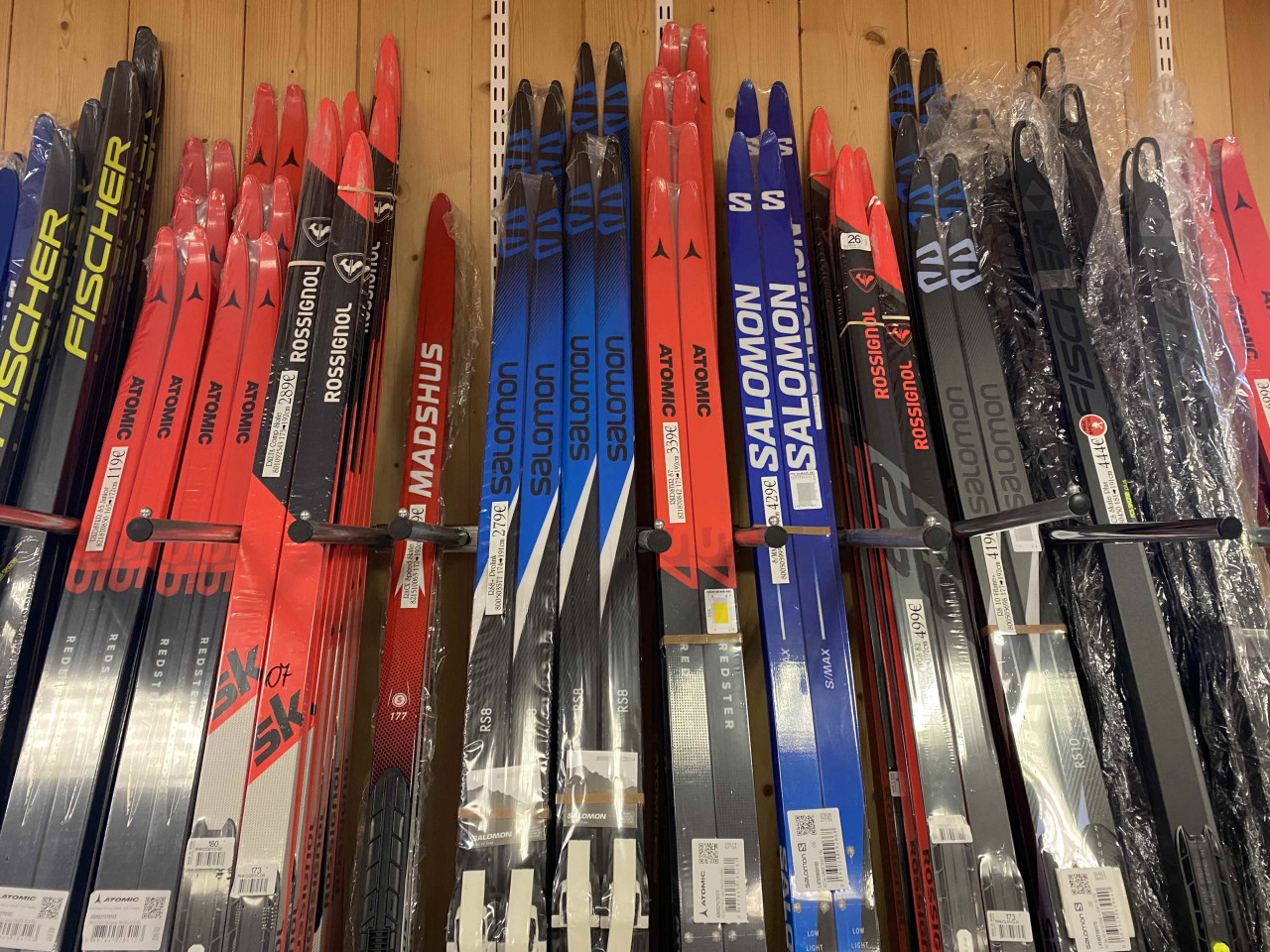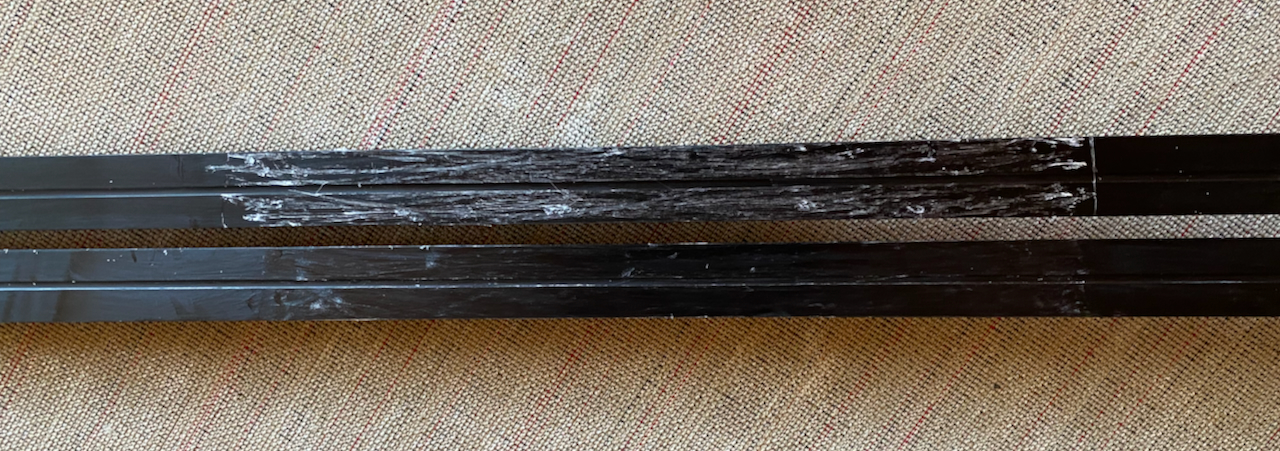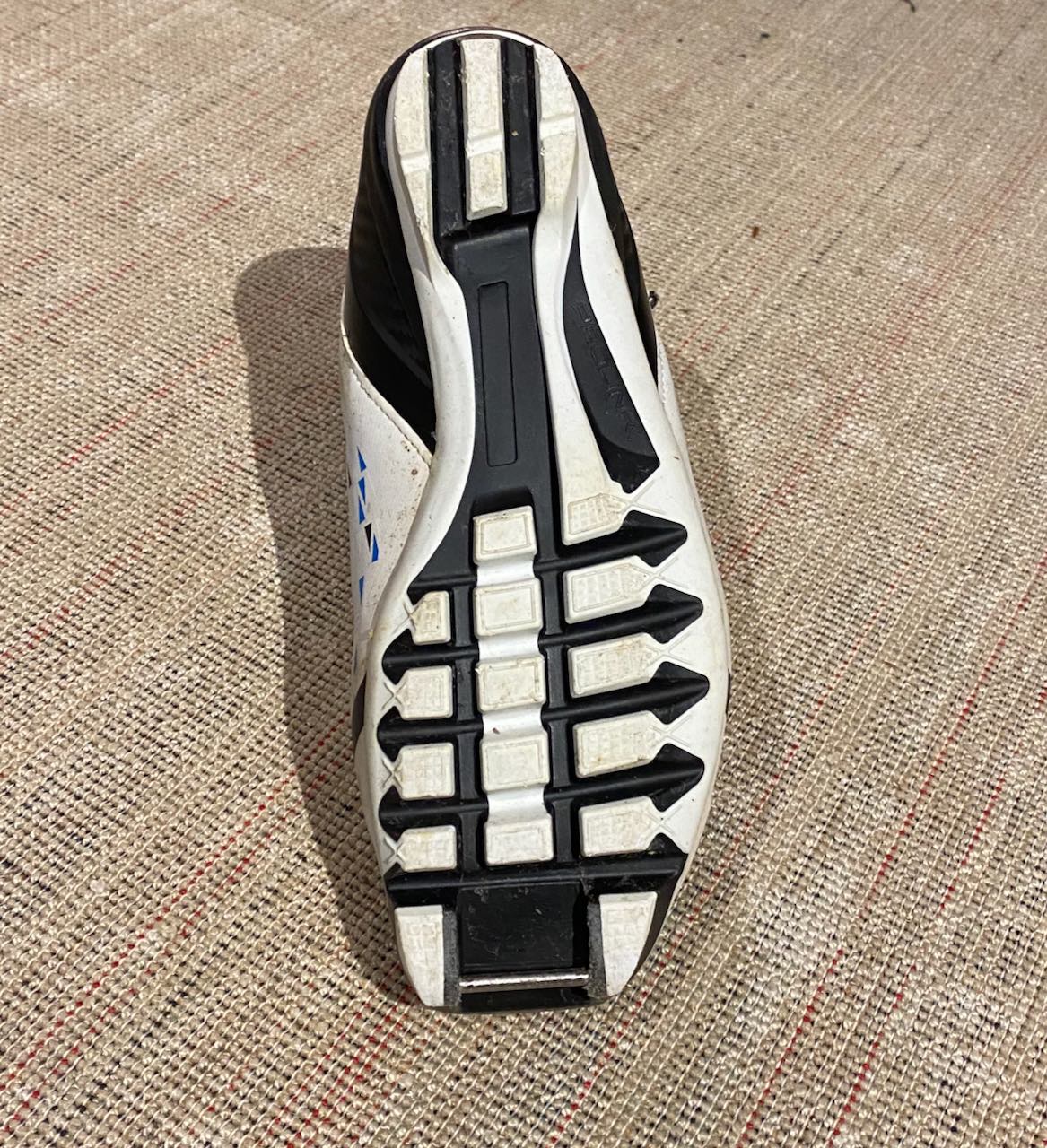 'Classic' cross-country skis and so many to choose from
'Classic' cross-country skis and so many to choose from
It's a maze of information! We are often asked for advice on buying cross-country skis as to the uninitiated it can seem like information overload. So, here are a few things to consider before you become the proud owner of a pair of 'skinny' skis. In this article we are referring only to 'classic' style track skis. Read on and then head for the shops. Tracks and Trails is a BASI Approved Ski School

Firstly, give some thought to where you prefer to ski. Is it in the Alps, or is it in Scandinavia? This might affect your choice in terms of the robustness of the skis and whether you want a metal edge, or half metal edge.
In the Alpine countries a classic track ski is best, and if you are planning to ski for instance in Norway you could use a classic track ski or go for one that has a metal edge which gives greater control on firm snow. In the Alps they groom the tracks daily, while in Norway it can be several weeks between grooming in remoter areas, hence the desire for greater control if the tracks are icy. It's really about personal preference and skill level.

Asnes Mountain Race - a track ski with metal edges in the middle of the ski
The base of a classic cross-country ski can be divided into sections, the glide zone on your ski is found at the tip and tail, while the kick zone (sometimes called the grip zone) is in the middle of the ski under your foot and extends beyond your toe at the front and finishes just before the end of your heel at the back.
The technique is to push down on this kick zone, thereby gripping the snow, and slide forward. This motion is known as 'diagonal stride' and is key to cross-country skiing.
There are 3 types of kick zones possible on cross-country skis:

Fishscales in the kick zone of the ski
Fishscale skis have a textured pattern similar to the scales on a fish. They are easy for a beginner to use and the kick zone requires very little maintenance. They have a really good grip on the snow, but it does make them slower on the glide phase. They are an easy option if you are starting out in cross-country skiing.

A 'skin' ski. Skins can be replaced when the fabric wears out
Skin skis have a fabric inserted in the base of the ski which provides grip when you push down, then glides as your move forward. These inserts can be replaced as and when required. Skin skis are increasingly popular and offer a great compromise between grip and glide. They can withstand more wear and tear than waxing skis, and they are now permitted in long distance races.

The top ski shows grip wax applied in the kick zone, and the bottom image shows the ski after the grip wax is rubbed in
Waxing skis can give the best performance, but knowledge of grip waxes and which to use is crucial. Daily maintenance and decision making required, but more speed as a consequence. Choosing the right kick wax (or grip wax) by checking the temperature of the air and considering snow conditions, is quite an art and something you will learn with practice. You will need to master this to get the best performance from your skis. Waxing skis are best left to advanced skiers.
Current day thinking is that the length of your classic cross-country ski should be your height in cm, plus 15 - 20cm.
Your weight and skiing ability should also be taken into account. In fact start with your weight and look at what the manufacturer recommends. Normally, this will affect the amount of choices you have, leaving you with around 3 or 4 pairs of different lengths to choose from.
Your weight will also dictate the camber, or flex, of a ski and in general the heavier the skier the stiffer the camber as the ski has more weight to deal with. More on this below when we talk about the camber.
Then you also need to consider your technical skills, goals and your height. If you are new to cross-country skiing, and not quite comfortable with the technique, and you have got your choices down to two ski lengths, then go for the shorter ones as they will be easier to ski. If you are determined to apply yourself to the technique and hope to improve quickly then go for the longer skis. The longer the ski the longer the glide, but they can also be harder to control.
When you put your skis on the ground you will easily notice that only the tip and the tail are making proper contact. The area in the middle of the ski is arched over the ground, and you can probably pass your fingers under the arch without removing the ski from the ground. This arch is known as 'camber'.
Broadly speaking the higher the camber off the ground the more technical the ski is. But it is a little more complicated than that in that the camber can vary from one pair of skis to the next, according to the weight of the skier or type of snow encountered.
The flex of the ski refers to how rigid the ski is and you can feel how rigid, or stiff, the ski is when you push the kick zone down to grip the snow to then glide forward. When you take your weight off the ski, the camber reduces the pressure on the kick zone and therefore promotes gliding. This should give a bouncing type of sensation.

When the skis are tied together you can clearly see the camber, this is the area where the skis do not meet
'Sidecut' is a term you will see referred to and this means the width of the ski. The sidecut is measured in several places; at the tip, the waist, and the tail. For example you might see, written on the ski 48-44-46, this means that the tip of the ski is 48mm wide, the middle of the ski over the kick zone, is 44mm, and the tail is 46mm wide.
When producing skis, manufacturers adapt the sidecut to each ability level. A beginner’s ski is wider, making it more stable whereas a racing ski is narrower which promotes gliding.
The bindings attached to your classic skis need to match with the pattern or profile on the sole of your boot. Until recently there were two different profiles on boots known as SNS and NNN. SNS for Salomon Nordic System, and NNN meaning New Nordic Norm. Salomon now have their own system called 'Prolink' which is essentially the same as NNN. Going forward it will make life easier as all skis and boots are adapting to the NNN system. The difference in bindings and profiles meant previously that if you owned a pair of SNS boots but you wanted to hire in a resort then you would have to check the hire shop has SNS ski bindings otherwise the two are not compatible.

NNN boot - which has a profile with two channels running the length of the boot

SNS boot - this only has one main channel running down the middle of the boot. Apologies for the grubby boot - it's been well used!
In both cases you can see that the boot needs to be 'married' to a binding that is the inverse of the pattern on the boot. This is crucial otherwise the two will not 'bind' together and it will be near impossible to ski or even to get the boot onto the ski - though we have seen it done! One of our guests wondered why it had been so hard to stay upright on their own skis, but they had been skiing with mismatched boots and bindings.
The price range of a pair of classic cross-country skis varies between £100 for a basic model to £500 for a performance ski which you might buy with the intention of doing a few races. This variation is due to technical differences in the materials used, the performance of the skis and the type of ski base. In general cross-country kit is much cheaper than alpine ski equipment. You can probably kit yourself out quite cheaply if you shop around.
Once you are the proud owner of classic cross-country skis you need to give them some love. We regularly have guests turning up with their own skis which have been badly neglected. A ski without maintenance does not glide well, and skiing will be much harder than it should be. The tip and the tail sections of your ski need to have glide wax applied regularly. This ensures a good glide and you will expend less effort. That has got to be a good result?
For more information about cross-country ski adventures with Tracks and Trails, speak to one of our expert team by calling +44 (0)20 8144 6442 or emailing This email address is being protected from spambots. You need JavaScript enabled to view it.
